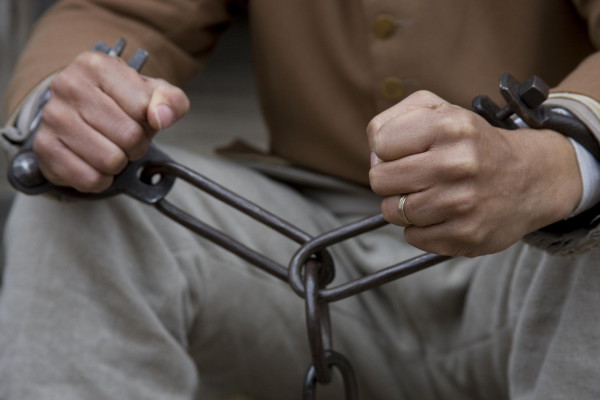
Slavery is a sensitive topic that can be difficult to talk about. But that awful chapter in our history is part of who we are as Americans. We need to reckon with that history honestly. That’s why I asked Harvey Bakari, Manager of African American Initiatives, what he considered some of the most common misconceptions he has encountered. Here are his top five.
#1 It was illegal to teach slaves to read and write
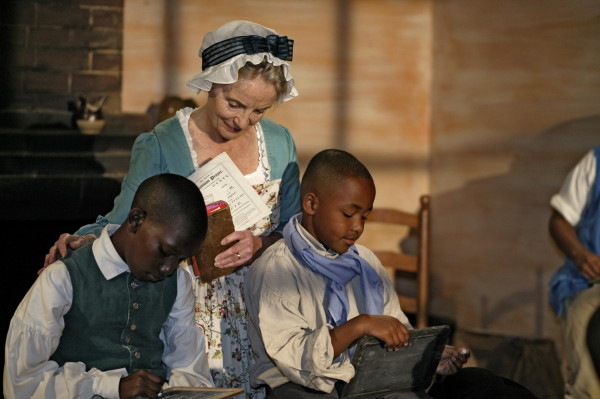
In 1740, South Carolina passed a law against teaching slaves to write in the wake of the Stono Rebellion, during which dozens of blacks and whites alike were killed.
While fears of slave uprisings were widespread, Virginia did little to prohibit teaching slaves to read or write. The education of slaves was considered a master’s prerogative, so the government didn’t interfere.
That’s not the same as saying it was common. It wasn’t. Williamsburg’s Bray School, where African American children received some education during the 1760s, was an exception. But Virginia’s first law prohibiting the education of slaves came in 1819, long after the end of the colonial era.
#2 Slaves were usually dressed in rags

For all of Colonial Williamsburg’s interpreters, at some point the clothes are new. But many visitors are surprised to see the portrayal of enslaved persons in clothes that actually look pretty nice. The expectation stems from a couple of assumptions: first, that slavery was equivalent to squalor, and that it looked the same in town as it would on a rural plantation.
“It’s not because we’re trying to make slavery look benign,” says Harvey. Like anyone else, an enslaved person’s clothing varied greatly depending on whether they worked in a house or a field, in the city or the country, and for a rich master or a relatively poor one.
Williamsburg, as Virginia’s capital, was the place where the power brokers of colonial society gathered. If their slaves were dressed in rags, it would reflect poorly on them. Their reputation would likely suffer.
During the abolitionist movement, especially from the 1830s, slaves were frequently pictured in ragged clothing and the most desperate conditions. In contrast to Virginia’s gentry, their goal was to portray slavery at its very worst.
Those images are still powerful today. But acknowledging that not all slaves wore rags does not change the fact that slavery was an oppressive, inhumane institution.
#3 Slavery was all about cotton
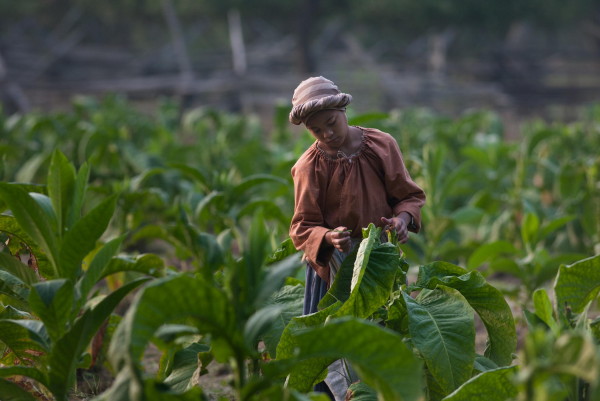
Many visitors to Great Hopes Plantation, Colonial Williamsburg’s 18th-century farm, wonder where the cotton is. After all, that’s the crop we think of first when it comes to American slavery.
That’s probably because it’s easy to think of slavery as an evil institution that remained relatively stable. But that’s a misconception. It actually varied greatly over time and in different regions (and not just between North and South).
Long before cotton, tobacco was Virginia’s major cash crop. While tobacco was critical to the growth of slavery in Virginia, it looked different from the 19th-century Deep South version.
Most plantations held a relatively modest number of enslaved people compared to the massive cotton plantations. And as visitors to the James River plantations can attest, the houses were hardly comparable to the antebellum mansions found in Mississippi and Alabama.
It’s a different context, and that reminds us that the progress of slavery’s expansion was far from inevitable. As the country grew and evolved, there were many opportunities to choose a different path.
#4 Slaves were actually better off in America
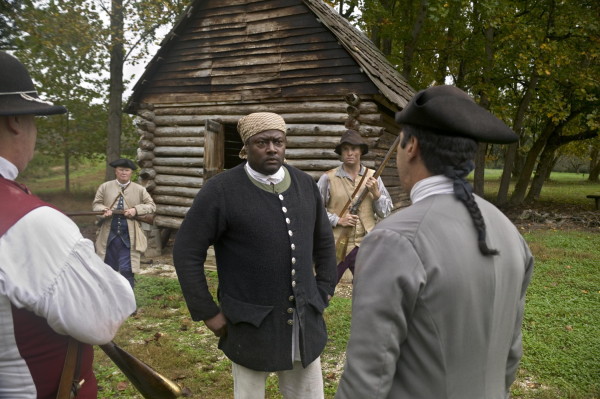
Were Africans were better off being slaves in America than free in Africa? Some people think so, in part perhaps because the West’s sense of superiority is so closely tied to modern notions of technology and an ever-higher standard of living.
Of course, in the 18th century, any technological divide was a lot narrower. For Harvey, though, this misconception is more deeply rooted in the cartoonish views of Africa that have been presented through popular culture.
From the belief in cannibals to the civilizing mission that was considered the “white man’s burden,” there has been a relentless emphasis on the idea of the “primitive.”
“It’s like going to Europe and finding the most primitive people and saying that they’re representative of the whole continent,” says Harvey.
But however bizarre, scary, dangerous, and savage a picture is painted of African societies, does it really make sense to suggest that enslavement is the better option?
#5 Human trafficking is the same as slavery
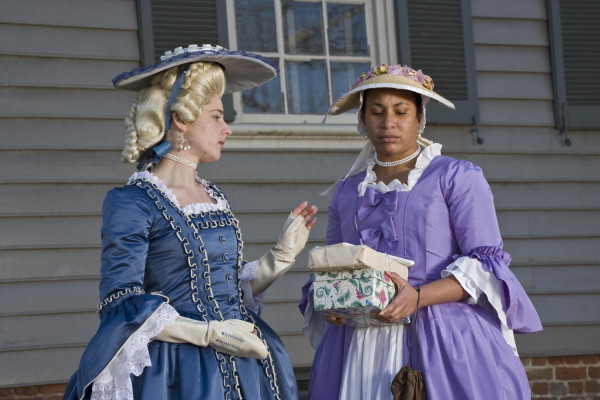
In the past few years it has become something of a commonplace to link the modern scourge of human trafficking with the lifetime bondage that was legal in America until the Civil War. But Harvey is more than a little uneasy equating the two.
American slavery was, after all, legal. Human trafficking, which covers a whole range of criminal activity from kidnapping to debt peonage, is criminal activity taking place in the shadows.
The difference matters. It speaks to the very definition of slavery—after all, how many millions more slaves would we count for the 18th century if we included all types of unfree labor?
It also speaks to the difference between history, the reasoned evaluation of the past, and advocacy, the attempt to right wrongs by shining a light on awful practices.
The people who owned slaves during the colonial period were doctors and lawyers, future presidents and religious people, wealthy families, and farmers. And it was out in the open. It was acceptable.
“And that,” Harvey says, “makes the story of American slavery more difficult to tell than the story of some criminal who lives in the dark and will not have monuments built for them and professorships named after them.”
So that’s Harvey’s list. What’s on yours? Do you have some story you’ve always wondered about?
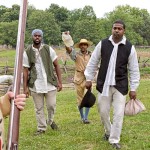
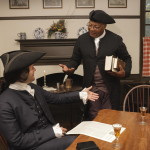
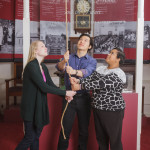
I just have one comment regarding the deep south slavery of Mississippi and Alabama.
I have lived in Mississippi my entire life. I was reared and educated here as well.
I currently work for the state as a professional architectural historian.
Let me state very clearly; slavery was different in different parts of these states as well. In fact, there are very large parts where there were virtually no slaves at all. And, most real, working plantation houses were not nearly as grand as the James River Plantation houses. People often confuse the grand town houses and suburban villas of towns like Natchez, Columbus and Holly Springs with actual plantation houses. The folks that owned those houses owned many plantations in Mississippi, Louisiana, Texas, Arkansas and many other places.
Slavery did indeed vary greatly by region and within states.
Debbie Schillinger says
I’m a history buff, as is my Father, and as my Grandfather was. However I’ve taken a step further and I’ve become the family genealogist. As I searched through court records in order to locate information about my Ancestors, I happened upon some Colonial Maryland Court Records of wealthy men that left their ancestral lands in the continent of Africa to settle in the Colony of Maryland. Those men brought with them numerous African slaves.
One case I remember in particular was about a wealthy African slaveowner who was summoned to court to defend himself against charges that his wealthy neighbors brought against him stating that he abused his slaves. He denied the charges, and if I remember correctly due to a lack of evidence from his neighbors the case was dismissed.
I mention the above case for a few reasons. First, because until I read that and other court cases, I just didn’t know that there were wealthy African men who settled in the Colonies of North America and thrived. Until I read those records, I had only heard of African men coming to the Colonies of North America as slaves. Second, in regards to the particular case that I previously mentioned I was struck by the fact that not only did a African man own several African slaves but that he apparently abused them. Obviously he abused his slaves to the point that his neighbors felt the need to take him to court over the issue. Third, since I was taken aback by the previously mentioned information because I hadn’t known of any wealthy African men who owned land in the American Colonies and owned African slaves. Then to have learned that he was apparently so abusive to his slaves that the other wealthy slave owners who were his neighbors took him to court over the issue in an attempt to make him stop the abuse was just stunning to me. I can only guess that I was not the only person who didn’t know that there were wealthy African slaveowners in Colonial America. I surmise that most Americans probably don’t know.
I am curious about the details of the case you cite. It bears some similarities to a couple of 17th-century incidents, but these specific details are unfamiliar. In particular, I don’t know of any wealthy Africans who came to the American colonies as wealthy men, or as slaveholders. I can’t imagine what circumstances would have made Maryland known to them as an attractive destination.
That is not to say there were not black slaveholders. But a large percentage of them were the legal owners of family members. Men and women purchased spouses, sons, and daughters out of slavery, for example, but were often not legally permitted to free them. The highest number seems to have been in South Carolina in the early 1800s. And many of those slaveholders were of mixed ancestry, further complicating the picture.
Nor is it to say that there weren’t some reasonably wealthy colonists of African descent. But in the cases I know of, it is because they were able to acquire land, which allowed them to acquire some measure of wealth.
In any event, I would be interested in any additional details you might be able to share. While I don’t think the case you cite would qualify as typical, it would be part of the story. If there is a central lesson here for any of us interested in understanding freedom and slavery in our history, it’s that there are no absolutes. Any generalization can be countered by dozens of exceptions.
Brooke says
Slavery is obviously an abhorrent practice, BUT, it angers me than so many fail to mention that many slaves who were slaves in America were ALSO slaves in Africa before they came here. It was not a matter of “Americans” storming into African countries and kidnapping everyone black they could find to enslave them. They were enslaved by Africans first.
I understand that it might seem that sometimes there is a focus on America’s faults. When the subject is slavery it’s hard not to seem that way. It’s not about blame so much as understanding.
I also think it’s also ok to hold ourselves to a high standard, to point out when we’ve fallen short of the Declaration’s ideals.
But in terms of the substance of your comment, while it is true that most enslaved people were initially taken by other Africans, they were indeed usually kidnapped to supply the transatlantic slave trade. It is not the case that all these people would have been slaves anyway, and that the difference was where they were enslaved. African slave traders profited from the demand created by the need for workers in the Americas.
Kraig S says
Thank you for the article. My wife, a fifth grade teacher, and I took the tour of Williamsburg about 5 years ago. We learned some things that were not in this article. Such as the fact that there were European indentured servants who work side by side with the African slaves in the fields and lived in the same sections. On the other hand,we did the walking tour of the reconstruction of the slave housing area and were told by one of the “actress” that misbehaved slaves had their heads cut off and put on a fence post! She said this and was looking for a shock reaction from us (we are white) - later I found this was not true.
Indentured servitude was dying out by the time of the American Revolution. So like so many parts of this story, it depends on when and where you’re talking about. And yes, there are some unusual stories around. Many have been, let’s say, enlarged in the retelling.
#3 I was born in Southeastern North Carolina, and now live there again. In this area from the early 1700s until the 20th Century there were two major cash crops: rice and naval stores. The labor force was enslaved until 1865. The methods of growing rice were the same as those practiced farther south in South Carolina. The first rice planters in North Carolina came from the Goose Creek area of South Carolina, and they brought their practices and their slaves with them. In the turpentine orchards boxing trees and dipping the turpentine was a mostly a solitary occupation. A slave would be assigned a certain acreage to box and dip. Burning tar and boiling pitch were group tasks a that called for leaders with experience. The tar kilns were prepared, covered and lit by men working in groups. Monitoring the burn was a task for an experienced few. Boiling pitch was again a task for experience. I say all this to point out that the organization of the labor to provide the cash crops, and so the daily tasks of enslaved Africans, and their descendants born in the colonies/provinces/states was different from either the Tobacco plantations of Virginia, or the cotton plantations of Mississippi or Alabama.
#5 Human chattel slavery still exists. Some of it is lumped under “human trafficking”, but in the places it exists slavery is condoned by the culture, and the local legal system has not stopped it. Almost any in-depth research on the area of Africa known as Darfur will reveal information about slave-taking raids that as violent and repulsive as any in human history.
I thoroughly enjoyed the post, and completely concur with Colonial Williamsburg’s efforts to make slavery a continuing part of its mission of public education.
Thanks for adding some additional nuance to the story. You reinforce the point that it’s hazardous to think of even American slavery as just one story. It is many.
Dan Clark says
It truly fascinates me how much I learn day in and day out about my (now) hometown. I grew up in Chesapeake and have always loved the state, but I feel like I’m really able to dig in and learn about my “town” - not to mention all the history that goes with it. While this is not a subject I think about often, some of the same thoughts have, in fact, crossed my mind, so this was very informative. Thank you for a great article!
And thanks for reading and sharing your thoughts!
Wind Chapman says
#4…. Debatable. Here life was rough but at least the slaves’ lives were valued. In Africa, death lurked behind every tree and I am not talking about from lions. I am talking about the ongoing slaughter of warring tribes. It still goes on to this day and it went on before the European slave trade.
Harvey Bakari says
Thanks for your comments. From a European slave owners’ perspective the value of an enslaved person was his or her labor and the ability to reproduce more children to increase the profits of European and American economies.
Death lurking about was and is a common reality for all humanity. Many Europeans migrated to the colonies to avoid religious persecution and death, such as white convicts who choose indentured servitude instead of death. Children between the ages of 8-16 were kidnapped of the streets of England and sold as apprentices in the colonies before African slavery become the dominate form of labor in Virginia. The British also were quite brutal and oppressive to many of their own subjects as well as the people of Ireland. England, France, Spain and the other countries were in constant warfare on land and sea. All of humanity engage in warfare and death, Africans, Native Americans, and Asians were no different in that regard.
True, Europeans did not invent slavery, it was practiced in different forms throughout the history of mankind. What became unique is that the transatlantic slave trade remains the largest forced migration in history. Slavery in the Americas was a legal system supported by European and American governments, economies, and religions. It was a legal hereditary race-based form of slavery, unlike slavery during the Greek and Roman periods.
There are plenty of creditable academic resources and scholarship online and in libraries. I would highly recommend David Brion Davis’ book, The Problem of Slavery in the Age of Emancipation.
I’d always thought of the statement “Slaves in America were better off,” as referring to slavery in other countries or parts of the world. For instance I’ve been learning about the Haitian Revolution (1790s) and they described the condition of the slaves then, and it was horrific, by comparison American slaves had a longer life because the conditions were “less harsh” (with all the usual caveats of, there is no way to describe slavery as not harsh).
I think you are correct to say that the comparison with the Caribbean is also commonly made. It’s a more valid one, as demonstrated by the fact that “misbehaving” slaves were often threatened with being sent there, or indeed actually shipped off. The life expectancy was such that slaveholders there purchased huge numbers of Africans because the mortality was so high. Natural increase accounted for much more of the growing enslaved population in the U.S.
I do not have any uneasiness about discussing slavery. Possibly it’s because I’m only second generation here. My grandparents, all four of them, were fortunate to get here. They were dirt poor in Italy and Sicily. Literally, dirt poor. My Dad told me the stories his mother told him about brushing dirt off of rocks into their aprons. When they got home, they put that dirt into their garden! I love this country and all its history-good and bad. We have come a long way and we continue on that journey.
Well said! It can be challenging to face our history warts and all, but I agree-it’s how we get better.
Many years ago, my family took part in a tour called “The Other Half” about slavery in Williamsburg. It was a walking tour and it was at least a two hour tour, as I recall us taking a restroom break at the Governor’s Palace. It was very informative and did break down some myths as I recall. I am not sure such a tour is still offered, but I hope that it is and that people would take advantage of it.
My wife and I did such a tour perhaps 2-3 years ago. Your description is similar to what we did. I think they must still do this or something like it.
There are a lot of events with the emphasis on slave life, and the life of African-Americans in general this month. Black History month.
I’m not sure what specific tours will be offered this Spring, but we have a fabulous assortment of programs for Black History Month right now. Read more here: http://makinghistorynow.com/2016/01/what-were-looking-forward-to-in-a-jam-packed-black-history-month/
Most also run during the course of the year, just less intensively. You’ll see that there are some site-specific tours listed here, but no general walking tours of the whole town.
Excellent piece, Bill. And agreed: we have to look slavery in the eye. It was our original constitutional sin - even before we had our own constitution.
Thanks, as always, for reading!
I would love to hear more about your viewpoint that slavery was not like human trafficking. I work in an anti-trafficking group. I have just started speaking about the issue and how serious it is here. It is not new. I know. That is why I speak about it so people will realize that it is here and not just in other countries. I agree with your comments, however I do get asked that question. I really would like a better answer. Would you mind if I used some of what you said. It was put so simply.
Thank you for the whole article.
Thanks for commenting. I’ll ask Harvey if he would like to add any more comments, as he is much more informed than I am, but his main point was about using consistent criteria to define what we mean by slavery. In the 18th century there were many types of unfree labor that were commonplace around the world-not just chattel slavery, but feudal systems, indentured servitude, forced labor from defeated enemies, etc. So there’a s lot of differentiation among those definitions. When we casually refer to human trafficking, it may serve as a useful analogy-a person unjustly being forced to work or serve against their will (and I don’t mean to diminish the awfulness of that)-but from a historian’s perspective, it’s just not the same thing. Slavery was an economic system that was completely legal in this period. Human trafficking, from our perspective at least, is a crime that occurs in the shadows. It may very well be that there are better connections to illegal trafficking going back in time, but to casually equate it with chattel slavery does not meet the rigorous expectations of many historians. I hope that’s a little helpful.
I am from Whitehaven -Your Admiral John Paul Jones raided our harbour in the Revolution. President Washington’s grandmother is buried in our churchyard. She came here, 1701, with her black servant, who was a baptised Christian and dressed the same as, and by her mistress and when this servant died she was buried with her mistress in our churchyard too, After the revolution many African slaves returned to England - were ‘manumitted’ - worked here and married and had children and were buried in local churchyards. They were not the only unpaid labour that were sent to the plantations. Scottish and Irish people rendered homeless by the aristocracy reclaiming farmland/”Enclosure acts” and those ‘transported’ as punishment for minor crimes were also sent as either slaves or indentured servants. Many were so poor and impoverished they died not long after arriving in America.
Thank you for this topic. I’ve learned a lot about the American Revolution in my visits to Williamsburg and I hope to learn a lot more about slavery. One thought that sticks in my head (although I don’t know if it is accurate) is the idea that slavery in the 1760’s to 1780’s was very different than slavery in the 1830’s to 1850’s. I don’t know if this is correct, but my sense is that white attitudes towards race and slavery became harsher. Maybe I’m sugar-coating things because I want slavery in the colonial period to be more humane (if slavery can ever be considered humane). On a similar topic, I would really like to know more about the daily dynamics (relationship wise) of slaves and their masters (as well as other free people they might meet over the course of the day if they were in the capital). I have a good sense of what race relations were like after the Civil War, but how do race relations in colonial times compare with say relations during the Jim Crow era. My sense was there was actually more integration in public in colonial times (and perhaps even during 19th century slavery) than there was in the Jim Crow era. I wonder though, how such integration worked? Were slaves compelled to avoid eye contact and be submissive to any white person they encountered? I look forward to learning a lot more about this from this blog and future visits to CW.
Mike, great thoughts. You put it into words I was trying to come up with. I await CW’s response. I’m sure will learn more. We always do.
Obviously every slave owner was unique and there were generalities evident in the treatment of one geographical region from another. In general, from my reading anyway, it became harsher in the 19th century and most so deeper in the south. Again, there would be differences between one owner and another. Reaction to Nat Turner’s rebellion brought a long period of harsher treatment. Reaction to the efforts of abolitionists was often harsher treatment, and the efforts of those abolitionists increase as the 19th century progressed.
I have been looking for a quote from Frederick Douglass that I read not long ago, but can’t recall the source. Basically he said that the treatment by the owner, if it were kinder, did not lessen the impact of being a slave. It was enough to know you were owned by another to be a terrible oppression.
I’ll let Harvey weigh in on this, but I wanted to let you know that we have an upcoming educational program, Jim Crow, that you may find offers some answers. It airs this Thursday, Feb. 11, at 10 am and 1 pm ET. You can register for the live stream here: http://www.history.org/History/teaching/HERO/livestream.cfm.
The program also airs on many PBS stations around the country at the same times. You can see if there’s a station where you live that carries it by following the same link and clicking on the “Broadcast TV stations” tab on the left.
Thanks for your interest!
Harvey Bakari says
Thank you for your comments and questions. Here are some basic factors to consider.
Some of the major differences between slavery in the 18th & 19th centuries was the proslavery movement, cotton production and issues concerning free states and slave states as the country expanded, just to name a few. The pro-slavery movement emerged in opposition to the early abolition movement in the late 18th century. They viewed slavery as the permanent and natural state of black people. The cotton industry depended on the increased workload placed on enslaved people. Of course debates about the role of state vs federal government came to ahead with the Fugitive Slave Act of 1850, which essentially allowed the federal government to recapture enslaved people throughout the country, despite state constitutions prohibiting it in the North.
Race relations in colonial time verves Jim Crow: Slave owners and slaves lived closely together out of the necessity, to control the slaves’ behavior, extract their labor, and prevent insurrections in the 18th & 19th century. However, following the American Revolution War, the increasing presence of free blacks was considered “the race problem.” From President Thomas Jefferson to Abraham Lincoln, many white Americans, North and South, were uncomfortable with the presence of free blacks and preferred that they be deported (Jefferson’s 1781 Notes on the State of Virginia) or voluntarily migrate to Liberia, West Africa. Since the late 18th century, many white Americans opposed equality and citizenship for free blacks. This matter was settled with the 14th Amendment to the US Constitution in 1868, which declared African Americans were naturalized citizens of the United States, therefore they no longer had to consider migration to Africa. However, the desire of many white Americans to remain separate from African Americans remained in the form of Jim Crow. This occurred despite Constitutional Amendments (13th, 14th, & 15th) and Civil Rights (1866 &1872) gained during the Reconstruction Era (1865-1877). I would highly recommend David Brion Davis’ book, The Problem of Slavery in the Age of Emancipation.